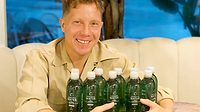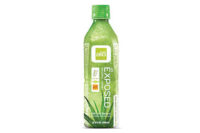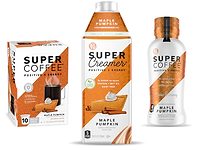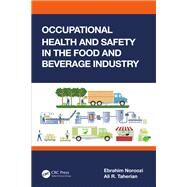Long revered as a solution for topical burns and healthy skin, aloe has become valued in the beverage industry for more than just its external benefits. According to Mayo Clinic, Scottsdale, Ariz., aloe has been linked to multiple health benefits, including laxative functions, canker sore treatment, plaque and gingivitis control, diabetes treatment, cancer prevention as well as many skin treatment functions.

|
|
Aloecorp’s aloe fields in Gonzalez, Mexico. (Image courtesy of Aloecorp) |
“Companies choose to add aloe to their beverage products because aloe is known to consumers as beneficial, and it doesn’t require explanation on the label,” says Patrick Anderson, Western regional sales manager at Terry Labs, Melbourne, Fla.
Seattle-based Aloecorp conducted human clinical studies on oral doses of its Qmatrix Activaloe product, which is suitable for beverage applications, to further discern the ingredient’s health benefits. Studies found that participants who consumed the product experienced decreased oxidative stress; reduced cholesterol; a decrease in facial wrinkles; increased skin elasticity; increased collagen production, which promotes skin health; increased amounts of peripheral blood monocyte CD56, which is critical to the immune system; and increased cell-killing capacity of natural killer cells, it reports.
In addition, aloe is known to act as a carrier when mixed with vitamins, helping them travel through the blood stream faster and keep them there longer, thus improving their efficacy, Terry Labs’ Anderson says.
A budding market
Although aloe has many known health benefits, beverages with aloe as their main component might not always be attractive to consumers because of the ingredient's bitter flavor, says Kaitlin Guest, corporate research and development chef at Gold Coast Ingredients Inc., Commerce, Calif. For this reason, aloe is commonly masked with strong flavors, she says. At the same time, the gelling properties of aloe can enhance the mouthfeel of the beverage and help other flavors last longer, she adds.
Aloe drinks are growing in popularity among consumers, says Jeff Barrie, Eastern regional sales manager for Aloecorp. According to the Mintel Global New Products Database, more than 20 new beverages containing aloe launched in the United States between January 2012 and January 2013, and more than 200 juices, teas, enhanced waters, carbonated soft drinks, powdered drink mixes and even weight-control shakes containing aloe launched globally in the last year. These drinks are particularly appealing to informed consumers who follow the natural market movement, Terry Labs’ Anderson says. Although aloe is most popular in the juice market, Anderson expects that the industry will see increasing aloe prevalence in carbonated soft drinks, teas and alcohol beverages, especially vodka.
Different branches
When it comes to formulating with aloe, there are two schools of thought about how to do it, Gold Coast Ingredients’ Guest explains.
Many believe that the inner gel contains most of the beneficial parts of the plant and little of the less beneficial parts, she says, citing information from Real Aloe Inc., Las Vegas. Followers of this branch of aloe use maintain that such aloe products are as close to “straight from the plant” as the preservation process allows, she says.
On the other hand, some aloe manufacturers prefer to use the whole leaf of the plant because they believe that this produces an aloe product that contains more of the nutritional properties of aloe, she says, citing Real Aloe Inc. However, others have noted that cellulose and bacteria, which can destroy the polysaccharides, or active ingredients of aloe, are present just under the rind or on the surface of the leaf, she says. To solve this, whole leaf manufacturers use carbon filtration and other techniques to filter out the impurities in the liquidized whole leaf, but some believe this also can filter out some of the plant’s beneficial properties as well, she adds.
Despite this divide in the aloe industry, Terry Labs’ Anderson notes that size exclusion chromatography tests that look for the presence of polysaccharides have shown no major difference between the two forms of aloe. The real difference lies in how the product is processed, he says. Like most ingredients, the sooner aloe is processed after harvesting, the fresher it will be, he says.
For beverage formulation, Terry Labs offers a range of aloe vera gels, liquid concentrates, extracts and powders made from both the whole leaf and the inner gel. One of its newest products, Aloe Gold Seal Natural 200x Powder, mimics fresh aloe vera and boasts polysaccharides in every molecular weight range found on the fresh leaf, the company says. It is manufactured using a specially designed proprietary process that prevents the breakdown of long-chain polysaccharides into short-chain molecules and is suitable for use in nutraceutical beverages, it says. BI








